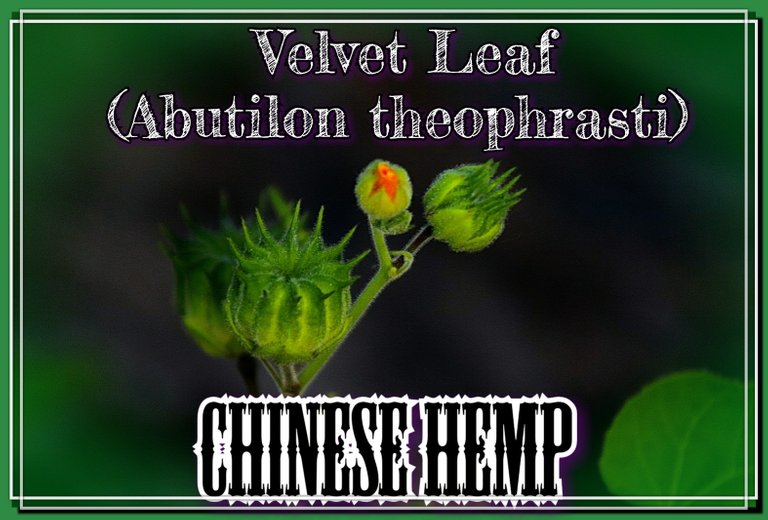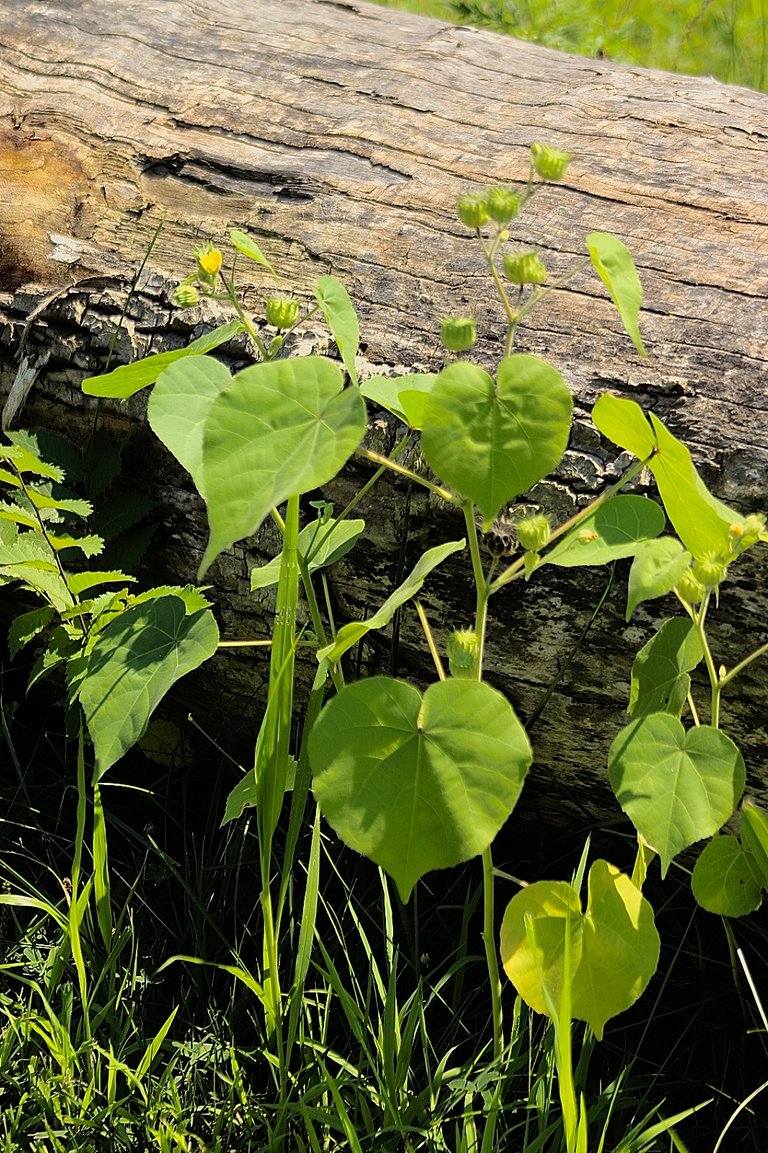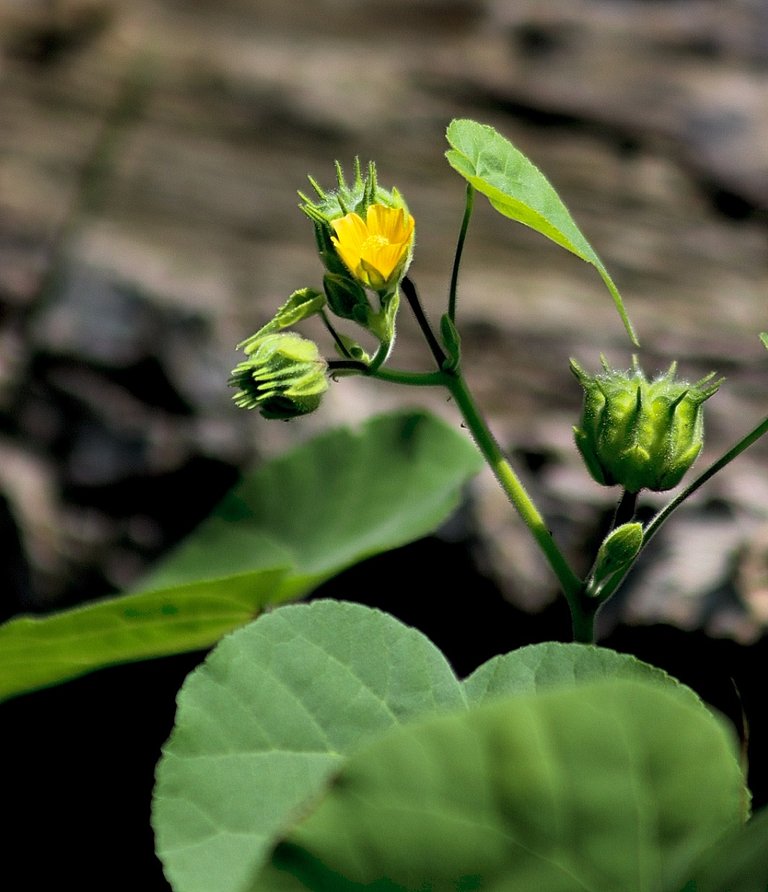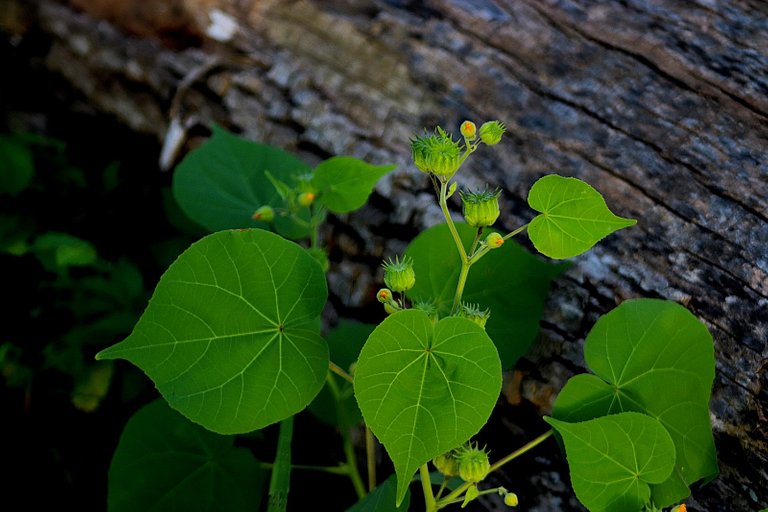Even though I live essentially in Downtown Omaha, NE I'm fortunate to live in a quiet neighborhood, with a lot of unoccupied land around me. Directly across the street from me is an empty field, which borders a Designated Wildlife Area.
The Wildlife Area has a pond that's part of the flood control for Carter Lake, which is surrounded by Levi Carter Park. Levi Carter Park is quite large at three miles end to end. It's also just a block away from my house, so it's where I spend a lot of my time. Nietzsche, I and sometimes Lucy(Tom's pup) walk here almost daily for the last 11 years.
Every year a new plant or bloom catches my attention, which amazes me. We are taught that most annuals pop up every year like clockwork, but I've found this to be more intermittent. This is thought to be more common with fungi, which are very picky about the conditions they like grow in, but some plants are just as picky.
Of course, with us releasing and applying more poisons out into the environment, we aren't helping things. We are making the environment more hostile to beneficial flora, labelling them weeds.
For instance, after walking the shores of Carter Lake for nine years, I had never noticed there was a primrose species growing along the lakeshore until it bloomed the tenth year of me walking by it. The next year it again stayed dormant, but I'm hoping it shows itself this year(do I have to wait another nine years?), because I want to take some better photo's of it. I will be introducing you to the Swamp Mallow in the near future.
The point of the story was to implore you to always walk your path as if it's the first time. Never revisit an area thinking you've seen it all, because you'll miss out on that illusive gem and potential knowledge that'll empower you further.

Today I want to introduce you to the Abutilon theophrasti or Velvet Leaf, which revealed itself last year, the eleventh year of my travels past the spot it chose to sprout. Although, it's unlikely this entity remained dormant for the first ten years in that spot. This is because it grew in a spot that was filled by dirt trucked in during improvements being made to the park. I believe it hitched a ride to this location.
That being said, the *Velvet Leaf's seeds can lay dormant for sixty years waiting for the soil to be turned over and spring to life. So, there are many reasons you can live in the same spot and travel the same areas for years, while still finding new edible and medicinal plants or fungi every season.

Let Me Describe It For You

The Velvet Leaf is aptly named, because its leaves are soft and fuzzy. If you are in the bush without TP and there are no Mullein Plants around, this will do the job. The leaves are shaped like a short, but broad heart and has miniscule teeth around edges(*like the heart that dots a High School girls 'i').
The plant itself is sparsely leaved, symmetrical and light green in color. It grows up to seven feet tall, but is typically around three feet. The one I spotted never grew larger than two feet tall. You could remove a branch, stand it next to the mother plant and they'd look identical.

It grows a seed pod per leaf, of which the pod reminds me of the Queen's Crown on a chess piece. The pods are green when young, but become brown and woody with age. They are cup shaped with 12-15 carpels or ridges that run up the cup vertically and beak at the top to a point. Each carpal contains three seeds and each plant can produce up to 60,000 seeds.
The seeds are a purple-brown and very tiny. They range in shape from round and elongated to the shape of a pyramid. The flowers are orange when a young bud then open into a yellow bloom and have five petals.

Where Is It Likely To Be Found?

The Velvet Leaf is a hermaphrodite and grows exclusively from its seed. It prefers well drained moist to dry soil in full sun or partial shade, but will survive as an undercrop as well. It prefers meadows in large open fields, but will grow along the tree line as well, and needs the soil to be disturbed to help activate it. It grows throughout the summer and even into early fall.
For this reason it loves plowed fields, construction sites and gardens. Because of this, its heartiness and ability to outgrow cultivated crops like corn and soy beans, its considered a nuisance plant. It's blaimed for nearly a billion dollars in losses to crops in the U.S. alone each year. The specimen I found was in an open field along the roadside growing in the shadow of a downed log.

This particular species thrives in the temperate region, while its brethren are mostly native to more tropical areas. It's native to China, but has been introduced to just about every continent on the planet. Mostly on purpose, but has spread from the seeds stowing away in crops that have been exported throughout the world. This being said, it's not known to be present in Latin or South America.

What Are The Benefits Of Velvet Leaf?

All parts of the Velvet Leaf are both edible and medicinal and is used in the textiles industry for its fibers.

The seeds of the Velvet Leaf can be eaten before becoming ripe and taste similar to sunflower seeds after being dried. Once they've ripened they become woody and bitter, but the bitterness can be removed by boiling and are then ground into a flour. In China this flour is commonly used in soups and to make noodles, or used to be throughout antiquity.
They are also up to 30% oil, but the small yield per plant isn't suitable to cultivate them for this use, because the seeds are so tiny. The oil is semi-drying, making it great in lotions.
The seeds are the only part considered edible, but the leaves, bark, flowers and roots can be eaten as well. In a pinch they'll get you by, but you don't want to gorge, because they also have a laxative effect and can increase your appetite.

The leaves, seeds, bark and roots are used to treat dysentery, because it's an anti-inflammatory, sooths the stomach, treats urinary incontinence and loose stools as a tea.
The bark is also believed to treat cataracts and is astringent.
The leaves are used in a tea as a demulcent(sooths mucus membranes), to treat fevers and as a poltice to relieve pain and heal minor wounds. The poltice from the leaves softens the skin as well.

Its fibers are the biggest reason for its cultivation and is thought to have been introduced to the U.S. for this reason. The fibers are tough and and flexible, making them great for rope and * fish netting*. Though they are also used to make paper, course cloth, bags and even as a binder in caulk for boats.
Even though it seems like a very beneficial plant(which it is!), it's not the best option for any of these uses. That's why even though it was introduced into the U.S. in the early 1700's for its fibers, it never really took. Hemp is a much better alternative and was used instead. Now it's just considered an agricultural pest, but its benefits are good to know, because you never know when you'll need its properties in dire times.
For more information you can visit PFAF.org and EatTheWeeds.com.
For the results of a full chemical analysis see Academic.oup.com
A great resource I've used successfully more often than not is the Pl@ntnet app to identify plants from a photo on your smartphone.

Every new experience adds to the respect, wonder and awe I feel when bonding with this living entity we call 🌎.
Please make sure to take the time to get outside and bond with your environment. Your health will thank you at every level of your being and please share your experiences with the world. Personal communal knowledge is beneficial to us all, because this interaction is essential to our evolution.

Thank you and I hope your day unfolds on your terms.
All image's and text are property of the author- All Right's Reserved


Join The Best Natural Health Community on Hive

Creating Abundance for all on Hive
Congratulations, your post has been added to Pinmapple! 🎉🥳🍍
Did you know every user has their own profile map?
And so does every post as well!
Want to have your post on the map too?
Cool, I have found these growing here in Illinois as well and collected the dried seed pods. Now I know where I can get some wild sunflower seeds to snack on :-)
Hey I know you😀. I'm glad to have shown you an edible use for them. Are you still quite active on Minds?
Just a little active on minds, not too many people seem to use it anymore... Then there's the guy that always spams comic book pages lol. I mostly just post my music videos there when the upload process actually works.
I collected the dry seed pods because they looked cool. But now I'll try and get a bunch of the seeds this spring for eating.
@notconvinced great article!!!, didn´t know about this plant and the properties it haves, as you said here in South America must be everywhere!. I remember a plant that once was food for indigenous people here called Yerba Caracas or Amarantos anf decades it was consider a plant of animals, but know it is one of the most nutritive plants.
Blessigns!
Isn't it amazing how a landscape changes across time, and to be in one place to be able to notice it? I love Spring for those little delightful observances of nature and all it's busy - ness, discovering new plants and things popping up that have never been there before. I haven't heard of this plant but I'm continually amazed at America's biodiversity.
It is amazing. You have to remember that America is as large as all of Europe and has every type of terrain and sits in the tropics to nearly the Arctic. I'll never run out of this kind of content. 😀
Well, I'm glad - because I'll never get sick of reading it!
Always walk your path as if it's the first time.
Yes. Just yes.
The weird thing is that I think this is the "weed" that is taking over one part of my Thai garden. Which makes sense since it's Chinese origins and the fact that I'm only a day and a half's drive from the southern Chinese border.
A really informative post - thank you.
That is very likely... I hope it doesn't take over.
It also releases a chemical that stunts the growth of or prevents the seeds of other plants from germinating. The levels are so low, they are not sure if this is part of the reason it so easily displaces other crops.
You might want to start harvesting the seed pods to help control their spread.